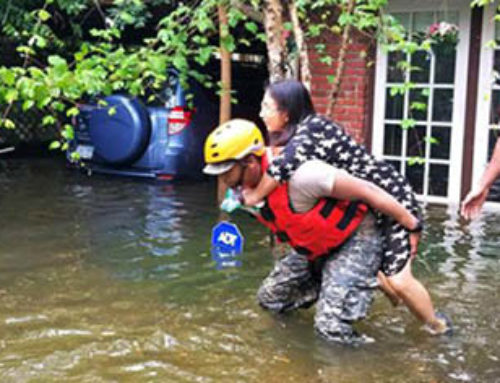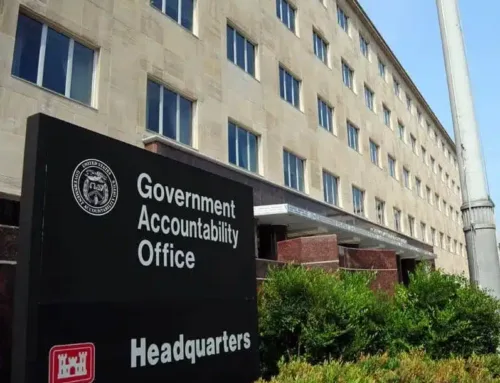As Hurricane Milton barrels across the Gulf of Mexico toward Florida, it is worth reviewing the potential infrastructure impacts of storms like this and how to mitigate them in the future.
On September 28, 2024, the North Carolina Department of Transportation (NCDOT) issued a stark warning: all roads in western North Carolina should be considered closed due to the severe flooding and destruction caused by Hurricane Helene. The storm’s impact has been catastrophic, with over 400 roads rendered impassible, including federally funded highways and two major interstates— I-40 and I-26. The situation will require significant federal action and, with it, a major outlay of taxpayer dollars. The real question: how can we better prepare for the inevitable?
Most federal highway maintenance is funded by the Highway Trust Fund (HTF), which is funded by gasoline and diesel fuel taxes supplemented by major transfers from the General Treasury. However, the HTF is generally reserved for routine upkeep, not for major disasters like Hurricane Helene. In such emergencies, the Emergency Relief Program (ERP), a subset of the HTF, steps in to fill the gap. Once a state governor declares a disaster, the federal share for emergency repairs is 100% if completed within 270 days of the disaster, while permanent repairs are typically funded at 80% for non-interstate roads and 90% for interstate highways. However, the ERP’s annual budget of $100 million is clearly insufficient for the scale of damage we are now seeing. Hurricane Helene alone is expected to cost up to $110 billion in damages and economic losses.
The ERP has already been stretched thin this year, as Congress authorized the FHWA to cover 100% of the expenses for the Key Bridge disaster in Baltimore in March 2024. Given the sheer cost of these disasters, supplemental appropriations have been necessary nearly every year. The program’s permanent annual authorization from the HTF has not increased since 1972. In fact, since 1998, the ERP has required extra funding 19 times. And now, with Helene’s damage piling on, it’s almost certain that more emergency funding will be needed.
North Carolina Governor Roy Cooper has made it clear that reopening primary roads and restoring access to isolated communities is a top priority. The NCDOT is focusing on repairing Interstates 40 and 26, as well as key U.S. and state routes. I-26, a critical north-south highway that crosses the Appalachian Mountains, has experienced severe flooding and bridge collapses. I-40, a major east-west artery, is even more heavily damaged, with entire sections of the highway collapsing into the Pigeon River Gorge. Mudslides have rendered additional miles impassable. The full cost of these repairs is difficult to estimate, but the loss goes beyond immediate repair expenses.
Disrupted supply chains, lost revenue from closed routes, and the cost of rebuilding two key interstates across a mountain range all add to the economic burden. Smaller local roads also need repair, and as of October 8, still 200 roads remain impassable. It’s clear that taxpayers will shoulder not just the direct costs of repair but also the broader economic fallout from supply chain disruptions and local business losses.
Hurricane Helene has wreaked havoc on more than just highways. The storm has destroyed more cellular towers than any event since at least 2017, cutting off crucial communication networks in the region. Freight railways in Florida and Georgia have also sustained heavy damage, further complicating recovery efforts and disrupting the national supply chain. Moreover, the inability to access medical care in some areas—due to road closures—could lead to a rising death toll, particularly among vulnerable populations.
Helene is a stark reminder of the growing costs of climate-related disasters. These storms are increasing in frequency and severity, and each one takes a more significant bite out of federal and state budgets. The ERP and similar programs are designed for situations like these, but their current funding levels are not keeping pace with the mounting costs. Without a proactive approach to funding disaster resilience, we will find ourselves in an endless cycle of emergency appropriations.
To break that cycle, we must invest in infrastructure that can withstand these disasters. This means not only repairing what was lost but also building smarter, with future storms in mind. The Infrastructure Investment and Jobs Act (IIJA) introduced changes allowing resilience measures to be incorporated into ERP-funded repairs. The IIJA also established the PROTECT program, which provides funding for resilience improvements in transportation infrastructure beyond immediate disaster recovery needs.
One of the primary causes of the infrastructure collapse is widespread flooding. A recent Congressional Budget Office (CBO) report found that investments in mitigation efforts by agencies like FEMA and the Army Corps of Engineers could save between $2 and $6 for every dollar spent on disaster prevention. If we rebuild without planning for future storms, we’ll waste taxpayer dollars and risk further damage. The U.S. Chamber of Commerce found that each $1 invested in resilience and disaster preparedness can reduce a community’s economic costs after an event by $7.
Furthermore, some infrastructure may need to be rethought in the rush to rebuild. Bridge placement, enhanced roadbeds, floodable infrastructure, increased conveyance like larger culverts, can all make impacts on the resilience of our infrastructure.
As we have long argued, if we want to protect our nation’s finances—and our communities— from the rising toll of climate change, we must budget effectively for these contingencies. For taxpayers, that’s a deal worth making.










Get Social